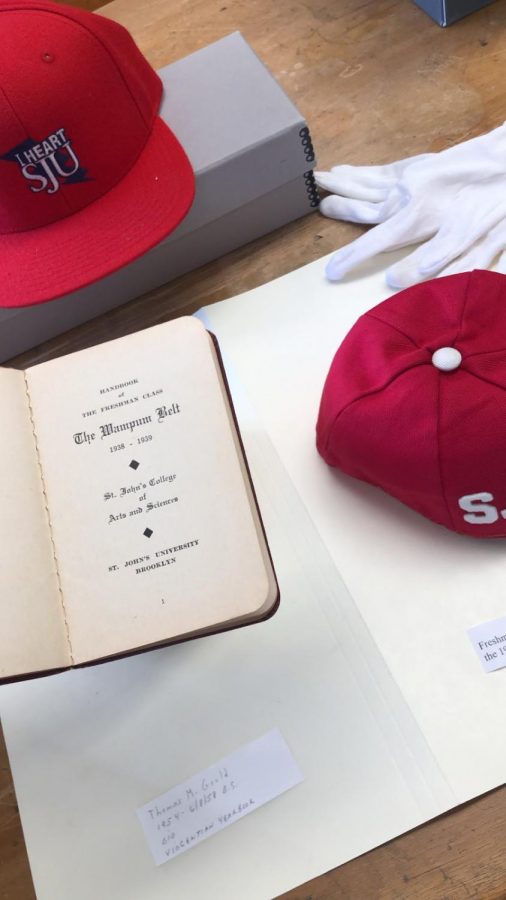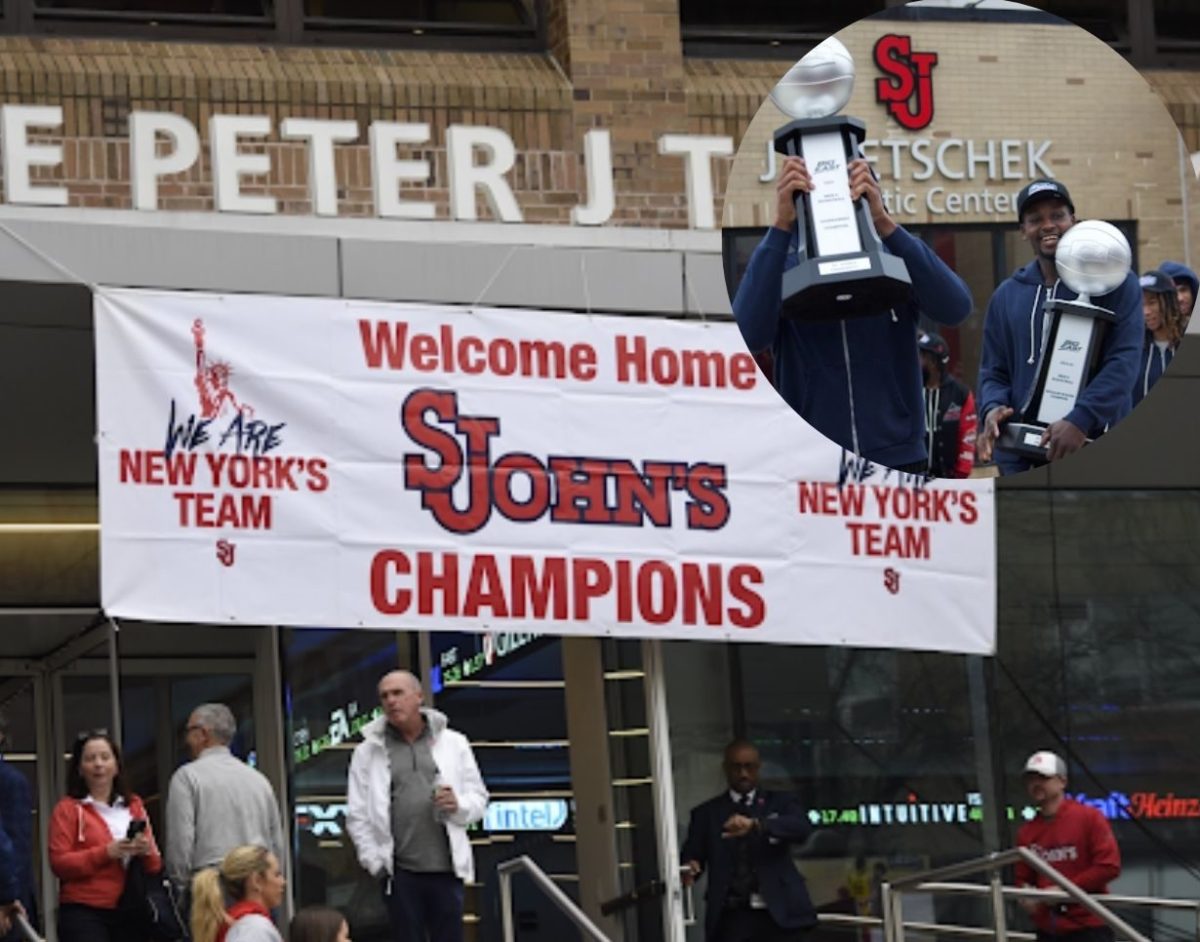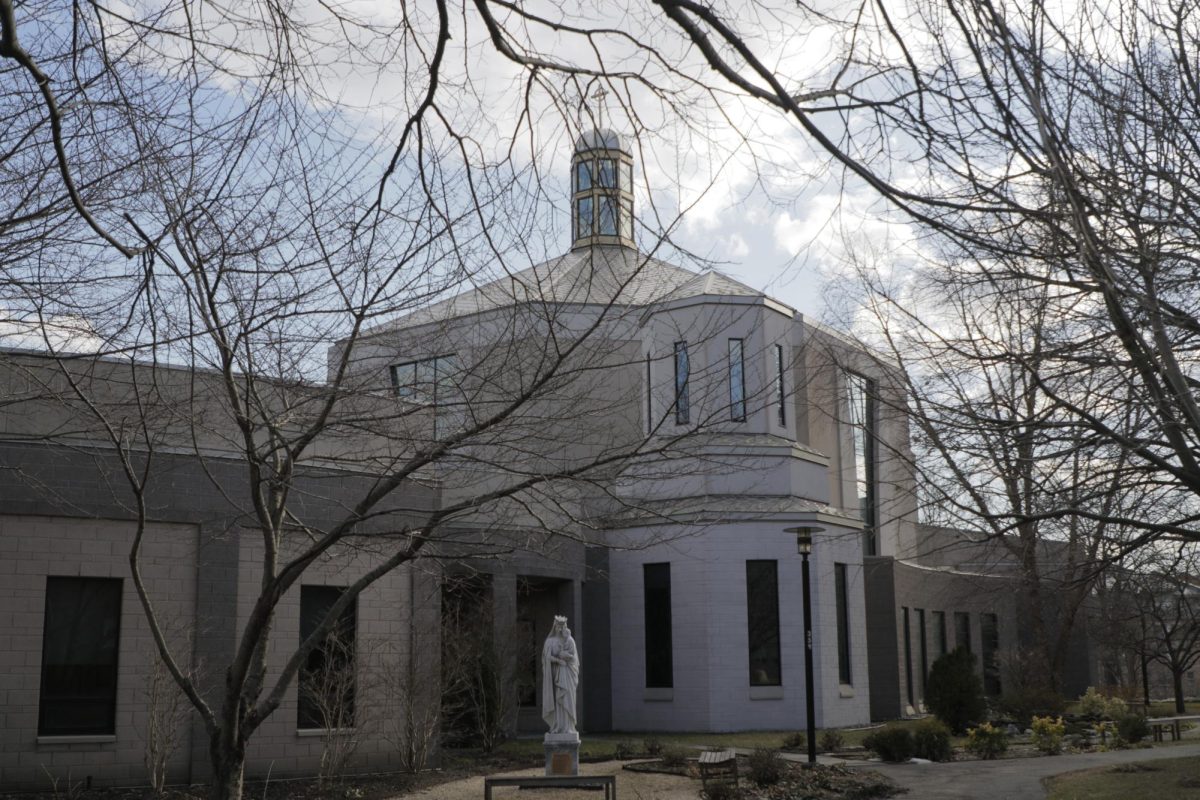St. John’s is celebrating its 150th anniversary this year and the University has launched various projects and events to bring about a festive spirit in the midst of a pandemic. Since the beginning of the semester, the University has been emailing “Then & Now” posters containing images taken throughout the institution’s history. School spirit has evolved over time, and the Torch was invited to the University Archives to take a deeper dive.
To the left of the main lobby of St. Augustine Hall is a set of stairs used by students most often around midterms and finals to make their way up to the libraries. However, what looks like a maintenance door at first glance hides a set of sunken stairs, leading down to another weighted door. Wedging through the door, there is a great hallway lined with walls of filing cabinets. Following the path of the cabinets like a yellow-brick road directs attention to the main door at the end of the hall. The ground-breaking shovel from 1870 lets you know that you’ve arrived at the University’s Oz: The Archives. Here, you’ll find a room full of historical items that truly express the spirit of St. John’s. Alyse Hennig, University Archivist and St. John’s alumna, processes documents, donated objects and other notable pieces of campus history in this room, such as film reels, fraternity flags, and printing-press era bibles.
“The students are able to better understand and engage with historical documents, rare books, and artifacts when they can examine the items up close,” Henning said in an email to the Torch. “I love to see the reactions of students when they discover something exciting while exploring the contents of a manuscript box, or the first time they hold a 15th century vellum-bound book.”
Though mascots are most notably present at sports games and school-spirit events, they tend to live on through pamphlets, handbooks and other publications.
“The mascot, past and present versions, can be seen throughout the yearbooks, newspapers, and student handbooks. It also appears on many objects such as t-shirts, keychains, class rings, and more,” Hennig said.
She had a few pieces of Red Storm Sports history at the ready for the Torch, including the Big East Conference Media Guide from 1984-1985, a “St. John’s Redmen” Courtside pamphlet from 1970-1971 and a ticket for a basketball game from Jan. 15, 1977, at what was then known as Alumni Hall (now Carnesecca Arena).

Hennig has worked on the digital archives where several of these publications have been scanned and filed. The “Student Handbook” covers showcase the demonstration of school spirit on campus; the 1963 Handbook, “The War Bonnet,” is adorned with a cover of a Native American profile donning a traditional headdress. The 1973 “Wampum Belt” features a teepee as the letter “A” in the title. Even the yearbooks have names nodding to the “Redmen,” the previous St. John’s mascot, such as the 1935 “Indian” and the 1954 “Warrior.” The yearbooks seem to be the first publication to truly phase out the use of Native American terminology, as they have been bearing the title of “The Vincentian” exclusively since the 1980s.
Red Storm Sports published a history of the University’s many mascots in 2009. When the University was first founded, the athletes at the beginning of Red Storm Sports history were referred to as “Johnnies” during competitions. Their all-red athletic attire led them to being labeled as the “Redmen” by a reporter in the 1920s, according to Red Storm Athletics. In 1928, two students stole a mascot, named Chief Blackjack, from the entrance of a cigar store. They brought it to a football game, where the Redmen won 22-0. Securing this victory was tied to the luck the new mascot carried with him to the field.
The “Redmen” name lived on, leading to the future use of Native American symbols. In 1993, the controversy of the Redmen became a heated topic on campus, when students felt the decision to change the name was sprung on them.
“The biggest decision of the year was arrived in a very hush-hush manner,” said Christopher M. Donohue, a Staff Writer for the Torch in 1993. “Redmen” was abandoned in 1994 to be more sensitive to Native American culture, sparking the search for a new name. That same year, St. John’s declared the new nickname as “Red Storm,” which was described as a form of cultural appreciation. The Chief Blackjack logo was dismissed earlier, in 1987.
The spring of 2009 saw the voting process for a new mascot. Several animals, including a bear, horse, dog and thunderbird were considered, along with a thunderbolt and a superhero, according to Red Storm Sports. Twelve days of voting and 11,000 votes later, “Johnny Thunderbird” became the new face of the University. He is a nod to Native culture and the original name of the competing athletes at the Brooklyn campus.
This year, school spirit has certainly evolved. Since the reopening of campus this year in tandem with the sesquicentennial celebrations, Johnny Thunderbird has been seen sporting a face mask to encourage the following of pandemic protocols. The Archives have meticulously documented how students showed their pride.
“Since we have researchers from all over the country and all over the world, we were already familiar with providing remote research assistance,” Henning said. “For now, we are hosting class visits to the archives in a virtual format, but it is not quite the same experience as in-person class sessions.”
Perhaps a masked Johnny Thunderbird image will be viewed through the archives by a future Johnny writing another anniversary piece.
The Archives are constantly updating their Instagram and Twitter accounts for the landmark anniversary celebrations, which can be accessed through the handle @sjuarchives.








